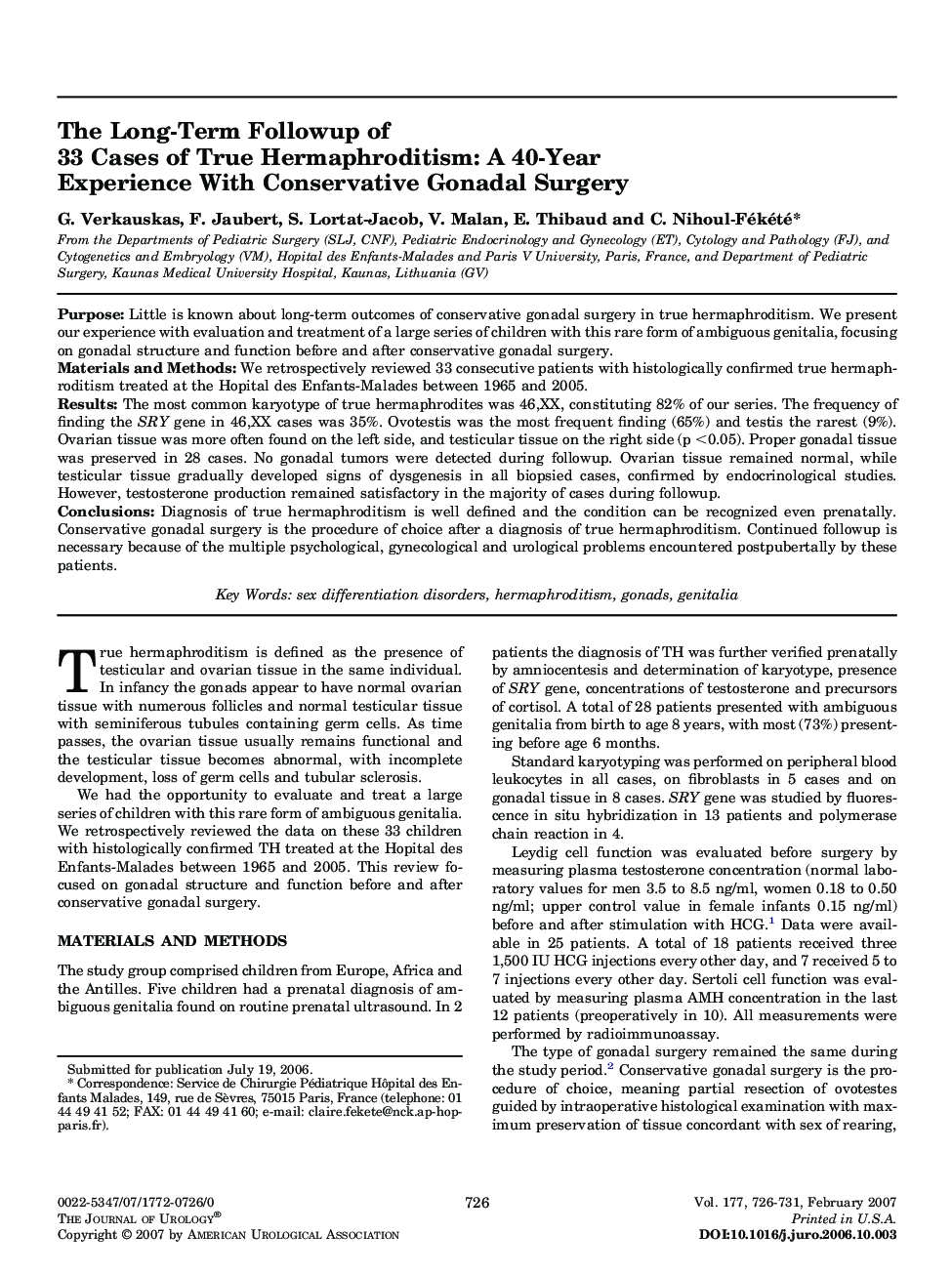| Article ID | Journal | Published Year | Pages | File Type |
|---|---|---|---|---|
| 3875510 | The Journal of Urology | 2007 | 6 Pages |
PurposeLittle is known about long-term outcomes of conservative gonadal surgery in true hermaphroditism. We present our experience with evaluation and treatment of a large series of children with this rare form of ambiguous genitalia, focusing on gonadal structure and function before and after conservative gonadal surgery.Materials and MethodsWe retrospectively reviewed 33 consecutive patients with histologically confirmed true hermaphroditism treated at the Hopital des Enfants-Malades between 1965 and 2005.ResultsThe most common karyotype of true hermaphrodites was 46,XX, constituting 82% of our series. The frequency of finding the SRY gene in 46,XX cases was 35%. Ovotestis was the most frequent finding (65%) and testis the rarest (9%). Ovarian tissue was more often found on the left side, and testicular tissue on the right side (p <0.05). Proper gonadal tissue was preserved in 28 cases. No gonadal tumors were detected during followup. Ovarian tissue remained normal, while testicular tissue gradually developed signs of dysgenesis in all biopsied cases, confirmed by endocrinological studies. However, testosterone production remained satisfactory in the majority of cases during followup.ConclusionsDiagnosis of true hermaphroditism is well defined and the condition can be recognized even prenatally. Conservative gonadal surgery is the procedure of choice after a diagnosis of true hermaphroditism. Continued followup is necessary because of the multiple psychological, gynecological and urological problems encountered postpubertally by these patients.
